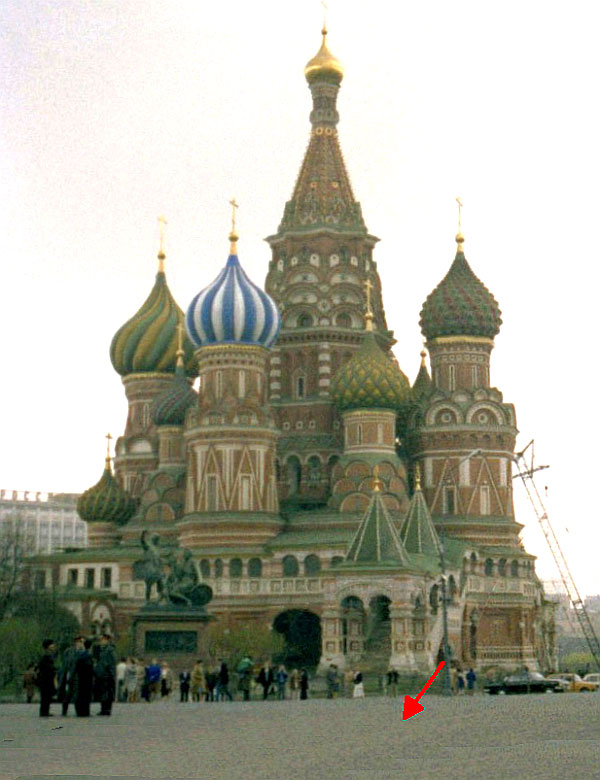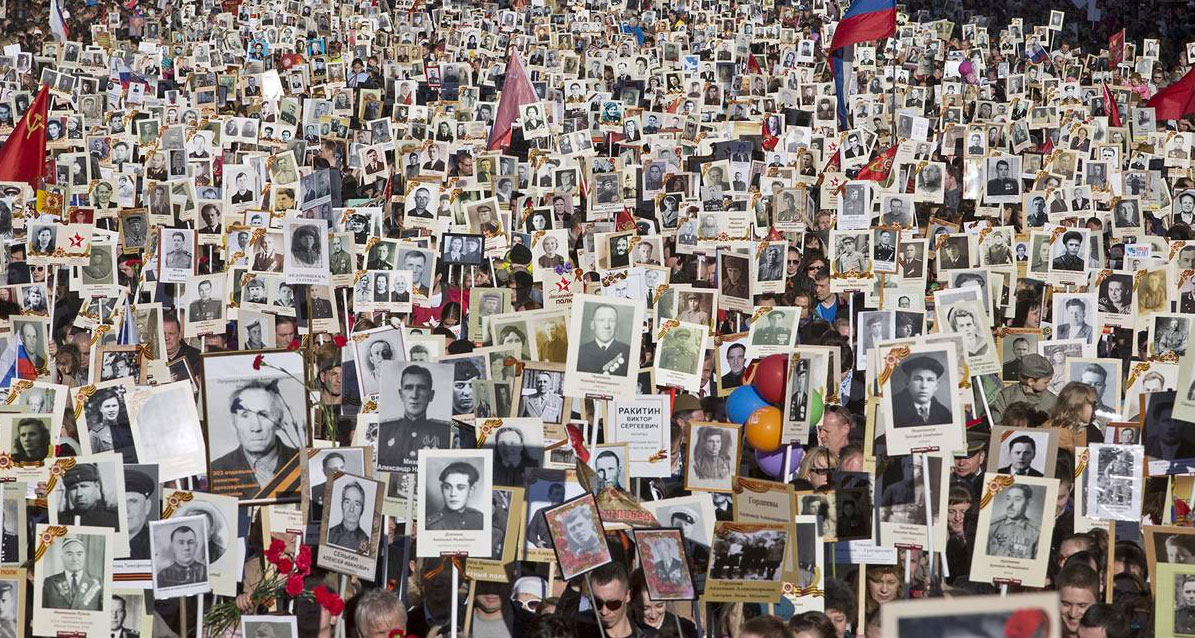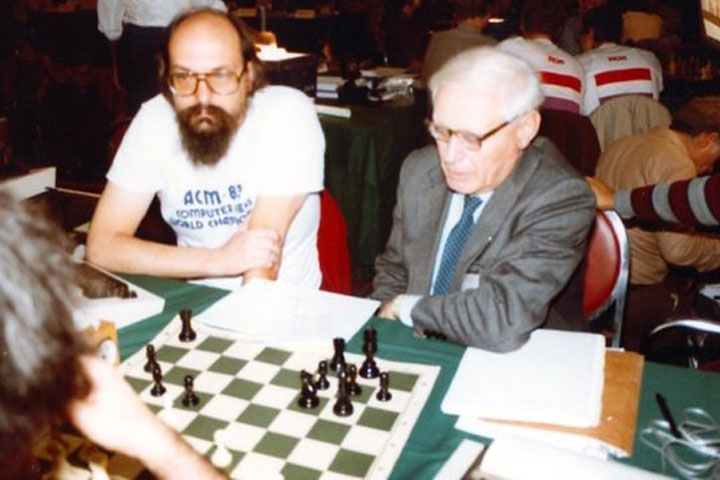A trip down memory lane
In 1982, the Soviet Chess Federation and legendary chess world champion Mikhail Botvinnik invited Ken Thompson, the creator of the world champion computer "Belle", to demonstrate this hardware chess machine in Moscow. An invitation was also extended to him by the former world champion. As a friend of both Ken and Botvinnik I too was invited, and embarked on an adventurous trip-of-a-lifetime. I remember everything most vividly and have written about this elsewhere — if you know the story just ignore this article. If not, have fun!
Ken Thompson is one of the most influential people in my life. Few others have had a similar impact on the way I think and understand things. He even contributed directly to my somewhat devious sense of humour. The adventures I have been through with him and his family in close to forty years and around 30 visits are the subject of a series of stories on my family blog.
In the early 1980s, Ken, who has given the world the operating system Unix and the computer language C — both still going strong — had revolutionized computer chess by building a hardware-based chess playing program. It was called “Belle” and its development is described in my first article of this series: Ken — an introduction in three syllables. The Soviet Union, at the time still alive and kicking, had for decades dominated chess. They had all the strongest players (except for Bobby Fischer), whom the state maintained using the latest research technology — teams of grandmasters, libraries of books and a huge “kartotek” I actually saw and have described. They had also started dabbling in computer chess, and their brute force program Kaissa had won the first World Computer Chess Championship, in 1974. The title was subsequently taken from them, in 1977, by a giant American mainframe program, Chess 4.6, which in turn was defeated in 1980 by Ken’s Belle. I have traced the ascent of Belle.
The Soviets were troubled by this development, and were looking for alternatives. The great World Champion Mikhail Botvinnik, an electrical engineer, was trying to find a way of managing the Soviet economy using artificial intelligence. With a team of computer scientists Botvinnik designed a highly selective chess program that used general principles of chess to drastically restrict the search.
After this somewhat long-winded introduction we can proceed to today's story. Before flying to Moscow I coordinated with Ken. We would be staying in the same hotel — but just in case, if they moved him somewhere else, I told him to leave the new address in the original hotel so I could find him. And: if things went completely astray he should the next morning at 10 a.m. go to the central Red Square and stand in front of the cathedral that looks like a wedding cake. I would meet him there.
 Well, everything did go astray and on my arrival I could not find Ken in our hotel. The hotel staff did not know (or care about) a Ken Thompson, and so we did not make contact that night.
Well, everything did go astray and on my arrival I could not find Ken in our hotel. The hotel staff did not know (or care about) a Ken Thompson, and so we did not make contact that night.
The next morning I told my Intourist guide that I would be going to the Red Square to meet a friend, to which my guide just said: "No you are not."
I was a little shocked: "I am a guest of the Soviet Chess Federation. I believe I can go where I want. Nobody said there were any restrictions."
But my guide insisted: "You are not going there! Today is Gitler Kaput ("Hitler kaputt" = the yearly celebration of the end of WWII). There will be a million people on the Red Square, holding up pictures of fallen soldiers." Of course the plan had to be abandoned.
Above is a picture Ken took a few days later, when the celebrations were over. The arrow indicates where we were scheduled to meet at 10 a.m. The next picture shows you what Red Square and the streets leading to it looked like on Gitler Kaput. You couldn't even reach the Square, let alone enter it.

What to do? I decided to call Botvinnik, but only got a lady who spoke no English. So I asked my guide to call for me. "You want to make phone call with great champion Mikhail Botvinnik?" he asked in disbelief. When I convinced him it was okay he said he would do it, but needed to know Botvinnik's "otchestvo". His what? "What is his father name?" he repeated in clarification. "I don't know that," I said impatiently, "just call him please."
But my Intourist guide was adamant. He actually went down the street to a bookstore and came back triumphantly with the information he needed to be able to call Botvinnik: Moiseevich, son of Moise (Moses). Without that he simply couldn't call, it would have been too rude to address him as Mr Botvinnik.
This is how the system works: if you were from the West, you could call him Mr Botvinnik. But if you were Russian you absolutely had to know that his father was Moise, and call him Mikhail Moiseevich. Patronyms, which simply mean "son (daughter) of" and are formed by adding a suffix: -ovich/evich for a boy, -ovna/evna for a girl. In Russia, I would be Frederic Aloisovich (my middle name is Alois).
Well, in the end I reached Botvinnik and, through him, Ken. They were both in crisis mode: the computer "Belle", which was going to be part of the lectures and discussions, was not on the plane from the US. Mikhail himself had climbed into the hold to make absolute sure. Ken had checked the computer in at the freight terminal at Kennedy airport, but it had not made it to Russia.
We placed a call to Bell Labs and Joe Condon, the co-builder of Belle. And this is how that worked: the hotel told us the call would take up to three hours to go through (it took four), and we should wait in Ken's room. And then they called every fifteen minutes to make sure we were waiting. On the other hand, when Joe woke up, he went into his kitchen in pajamas, pushed a dozen numbers and immediately spoke to us. Turned out that Belle had been confiscated by the US authorities at the airport, because the export of advanced technology to Russia was strictly forbidden. Ken could face arrest on his return. But the current problem was we had no chess playing computer in Moscow.
Ken and I were summoned to the head office of the Soviet Chess Federation, where the president, Nikolai Krogius, received us with a very stern face. Nikolai Vladimirovich was a famous grandmaster (he had assisted Spassky in his 1972 match against Bobby Fischer), and he told us that the missing computer was a disaster: "Can you imagine what the Soviet press will make of this?" Ken shrugged. "Ruhollah Khomein has banned chess in Iran," Krogius said. "Is Ronald Regan trying to do the same in the America?" Krogius wanted to know if Belle had any military use. On his return the Washington Post asked the same question. Ken's reply: "Well, you might be able to kill a few people if you threw it out of a plane."
So the lectures were cancelled. Instead, Botvinnik invited us to his dacha outside Moscow, where we could chat with his AI chess programmers. Actually we wanted to meet them in their workplace and fool around with the computer. But Mikhail insisted we all come to his summer residence. There we were served a sumptuous buffet meal, with smoked meats and fish, noodle salads, breads and general delicacies. We ate and ate until we no longer could follow their instructions to "go on, take a little more." After we said we simply couldn't, some helpers cleared the table – and brought in the main meal! Big roasts, steaming potatoes, vegetables and salads. We were doomed!
Part two of this reminiscing report will follow tomorrow


















 Well, everything did go astray and on my arrival I could not find Ken in our hotel. The hotel staff did not know (or care about) a Ken Thompson, and so we did not make contact that night.
Well, everything did go astray and on my arrival I could not find Ken in our hotel. The hotel staff did not know (or care about) a Ken Thompson, and so we did not make contact that night.





